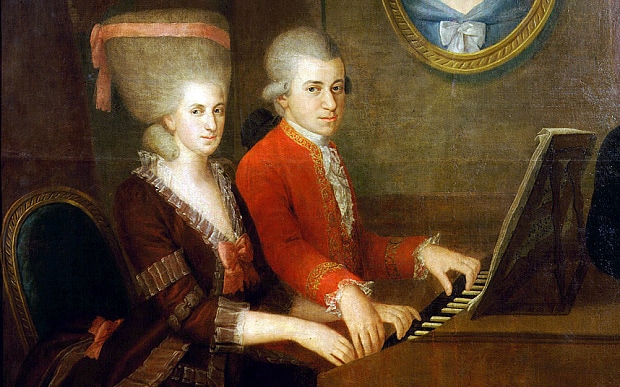Calling all pediatric dentists!
Cat Trumpet, aka musician and anime lover Curtis Bonnett, may have inadvertently hit on a genius solution for keeping young patients calm in the chair: relaxing piano covers of familiar tunes from Studio Ghibli’s animated features.
The results fall somewhere between pianist George Winston’s early 80s seasonal solos and Ryuichi Sakamoto’s soundtrack for the film Merry Christmas, Mr. Lawrence. Let us remember that most of these tunes were fairly easy on the ears to begin with. Composer Joe Hisaishi, who has collaborated with director Hayao Miyazaki on every Studio Ghibli movie save Castle of Cagliostro, isn’t exactly a punk rocker.
Many listeners report that the playlist helps them stay focused while studying or doing homework. Others succumb to the emotional riptides of childhood nostalgia.
Tender prenatal and newborn ears might prefer Cat Trumpet’s even gentler harp covers of seven Ghibli tunes, above.
Meawhile, the Japan-based Cafe Music BGM Station provides hours of jazzy, bossa-nova inflected Studio Ghibli covers to hospitals, hair salons, boutiques, and cafes. You can listen to three-and-a-half-hours worth, above. This, too, gets high marks as a homework helper.
Cat Trumpet’s Relaxing Piano Studio Ghibli Complete Collection
00:00:03 Spirited Away — Inochi no Namae
00:04:14 Howl’s Moving Castle — Merry Go Round of Life
00:07:16 Kiki’s Delivery Service — Town With An Ocean View
00:09:31 The Secret World of Arrietty — Arrietty’s Song
00:13:29 Laputa Castle In The Sky — Carrying You
00:17:05 Porco Rosso — Theme
00:19:55 Whisper of the Heart — Song of the Baron
00:22:33 Porco Rosso — Marco & Gina’s Theme
00:26:19 Only Yesterday — Main Theme
00:29:07 From Up On Poppy Hill — Reminiscence
00:34:12 Spirited Away — Shiroi Ryuu
00:37:06 Nausicaä of the Valley of the Wind — Tori no Hito
00:41:14 Nausicaä of the Valley of the Wind — Kaze no Densetsu
00:43:25 My Neighbor Totoro — Kaze no Toori Michi
00:47:48 Castle of Cagliostro — Fire Treasure
00:51:38 Princess Mononoke — Tabidachi nishi e
00:53:07 Tales From Earthsea — Teru’s Theme
00:58:17 My Neighbor Totoro — Tonari no Totoro
01:02:35 Whisper of the Heart — Theme
01:06:03 Ponyo — Rondo of the Sunflower House
01:10:34 Howl’s Moving Castle — The Promise of the World
Cat Trumpet’s Relaxing Harp Studio Ghibli Collection Playlist
00:03 Spirited Away — Inochi no Namae
04:01 Spirited Away — Waltz of Chihiro
06:43 Howls Moving Castle — Merry Go Round of Life
09:45 Howl’s Moving Castle — The Promise of the World
13:15 Laputa Castle In The Sky — Main Theme
16:55 Ponyo on the Cliff by the Sea — Main Theme
20:15 Tonari no Totoro — Kaze no Toori Michi
Cafe Music BGM’s Relaxing Jazz & Bossa Nova Studio Ghibli Cover Playlist (song titles in Japanese)
0:00 海の見える街 〜魔女の宅急便/Kiki’s Delivery Service
4:10 もののけ姫 〜もののけ姫/Princess Mononoke
7:28 君をのせて 〜天空の城ラピュタ/Laputa, the Castle of the Sky
11:09 風の通り道 〜となりのトトロ/My Neibour Totoro
16:26 ひこうき雲 〜風立ちぬ/THE WIND RISES〜
19:48 空とぶ宅急便 〜魔女の宅急便/Kiki’s Delivery Service
25:05 人生のメリーゴーランド
〜ハウルの動く城/Howl’s Moving Castle
28:07 いつも何度でも 〜千と千尋の神隠し/Spirited Away
32:08 となりのトトロ 〜となりのトトロ/My Neibour Totoro
36:40 さんぽ 〜となりのトトロ/My Neibour Totoro
38:40 崖の上のポニョ 〜崖の上のポニョ/Ponyo
42:08 ねこバス 〜となりのトトロ/My Neibour Totoro
46:06 旅路 〜風立ちぬ/THE WIND RISES
49:16 アシタカとサン 〜もののけ姫/Princess Mononoke
53:38 おかあさん 〜となりのトトロ/My Neibour Totoro
58:19 旅立ち 〜魔女の宅急便/Kiki’s Delivery Service
1:02:25 風の谷のナウシカ 〜風の谷のナウシカ/Nausicaa of the Valley of the Wind
1:06:59 やさしさに包まれたなら 〜魔女の宅急便/Kiki’s Delivery Service
Tune in to Cat Trumpet’s Spotify channel for his relaxing takes on Disney and anime, as well as Studio Ghibli. They are available for purchase on iTunes and Google Play, or enjoy some free downloads by patronizing his Patreon. He takes requests, too.
Tune in to Cafe Music’s BGM Spotify channel for Studio Ghibli jazz, in addition to some relaxing Hawaiian guitar jazz and a selection of nature-based mellow tunes. They are available for purchase on iTunes.
Related Content:
Insanely Cute Cat Commercials from Studio Ghibli, Hayao Miyazaki’s Legendary Animation Shop
Hayao Miyazaki Picks His 50 Favorite Children’s Books
How the Films of Hayao Miyazaki Work Their Animated Magic, Explained in 4 Video Essays
Ayun Halliday is an author, illustrator, theater maker and Chief Primatologist of the East Village Inky zine. Follow her @AyunHalliday.




